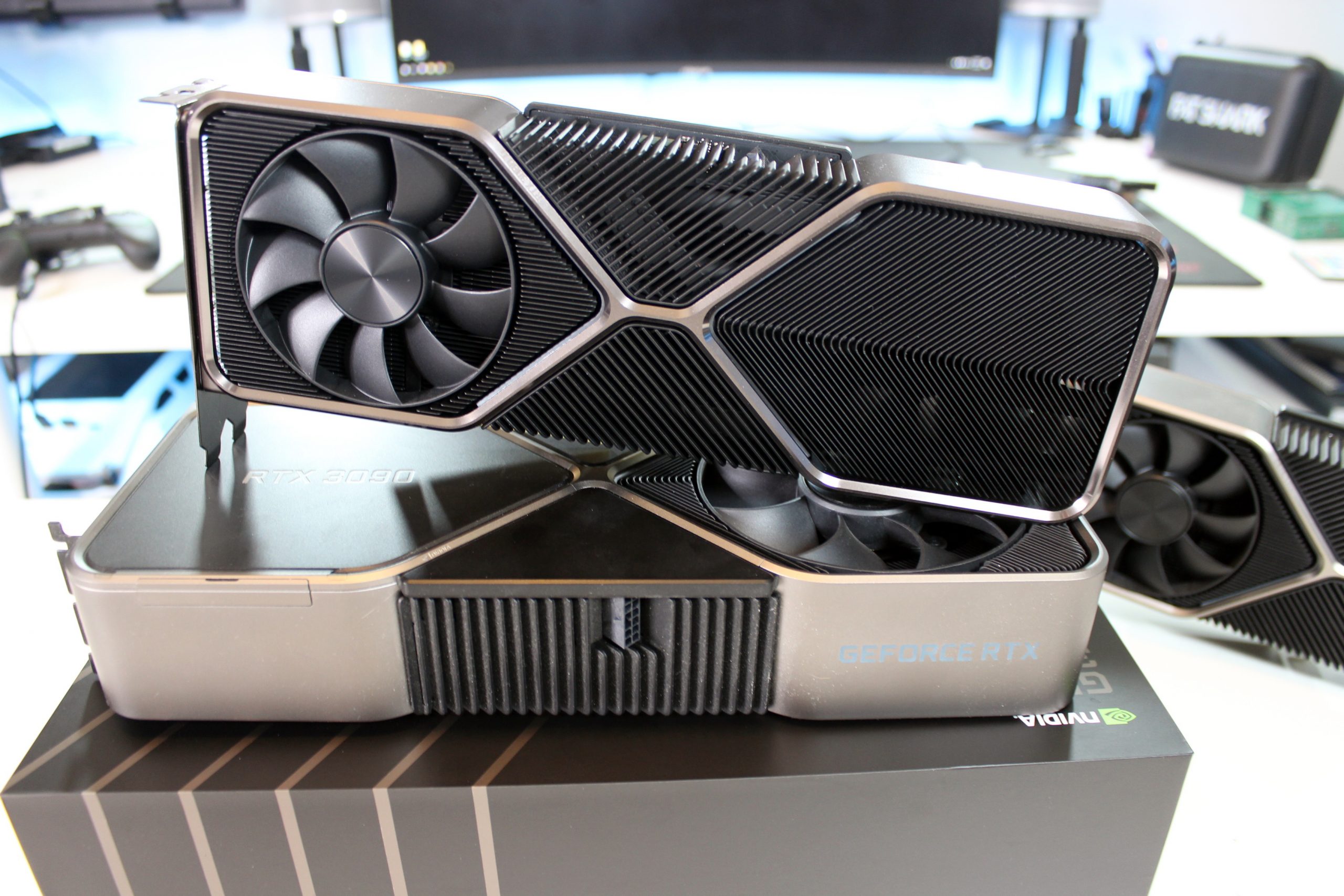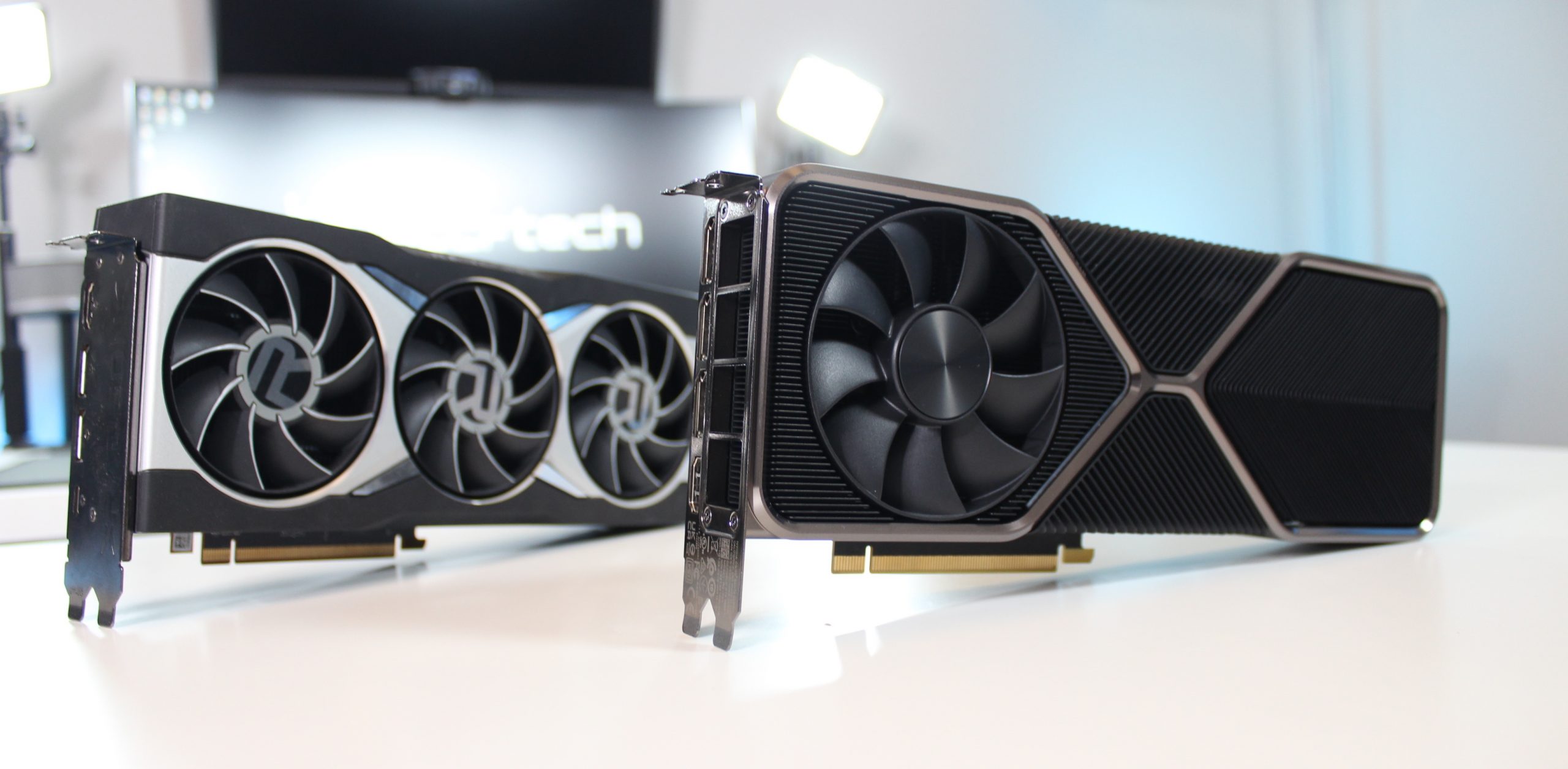There’s a new gaming flagship in the Ampere Lineup. The RTX 3080 Ti managed to take that title from the existing RTX 3080 and push that performance right up against the RTX 3090 in gaming loads but not quite pushing it over the edge. So you’ll still find an argument for the RTX 3090 and its big ol massive cooler to stick around at the top of the stack. In another lifetime the RTX 3080 Ti could easily have gotten away with a title like RTS 3090 or RTX 3090LE but the titanium moniker suits it well.
There was admittedly some concern for the cooling solution as the RTX 3080 Ti still carries the same 350w TGP of the RTX 3090 but is putting that in the same cooler that keeps the 320w RTX 3080 in check, but that was a bit misplaced. NVIDIA set the cooler to target a GPU temp of 75C and that’s where it hit and stayed thanks to dynamic clock throttling, showcasing that with liquid or bigger/better cooling you could keep the core frequency well over the ~1825MHz that our sample stayed at. The one area of concern I do have is the memory temperature that hovers at the 100C mark, but that is within spec.
But that all translates into a quite good performance where, in most cases, we see the RTX 3080 Ti kissing the RTX 3090 in the performance sector, just a slight tweak in frequency on the core or the memory could put it right up there. While I think from a sheer capacity stance I would have loved to see the RTX 3080 Ti double the VRAM of the RTX 3080 but moving to that wider bus does deliver better overall performance and still gets us a 20% bump in VRAM capacity.
I can’t go over performance without mentioning DXR and the likes of Ray Tracing’s performance. It’s there, people argued that the RTX 20 Series just wasn’t quite there, but the RTX 30 Series is it. We’re seeing great performance in all games that run the RT features and even better when they’re paired with DLSS. Early implementations of DLSS may have been mired with image quality issues but the later DLSS 2.0 has been spectacular.
The cooler on this card does its thing, with flying colors to add. There is still some work on our end to be done regarding case effectiveness and how it impacts other components, but the new conservative temperature target keeps the noise and thermals in check.
The elephant in the room with the RTX 3080 Ti is from within its own product family. The RTX 3090 comes in at an extra $300 MSRP and that gets you double the VRAM and (at least on the Founders Edition) a massive cooler, but the RTX 3080 gets you a little less VRAM but at $500 less MSRP so you’re going to have your hands full deciding which of these in the Ampere lineup to pick from. The RTX 3080 Ti does put up good performance compared to its competitors RX 6900 XT but that one comes in at $200 less for their reference edition.
At the end of the day, the RTX 3080 Ti does indeed deliver RTX 3090-like performance and at the MSRP of $1199 it does offer a substantial performance uplift over the previous RTX 2080 Ti for the same MSRP of its Founders Edition (although it was listed with a starting price of $999) but it does face stiff competition from within its own product line. The good thing is if you want near that RTX 3090 but don’t want to spend quite as much the RTX 3080 Ti offers a compelling alternative, now let’s see how that LHR helps with availability.
The post NVIDIA GeForce RTX 3080 Ti 12GB Founders Editions – Pure Titanium by Keith May appeared first on Wccftech.



